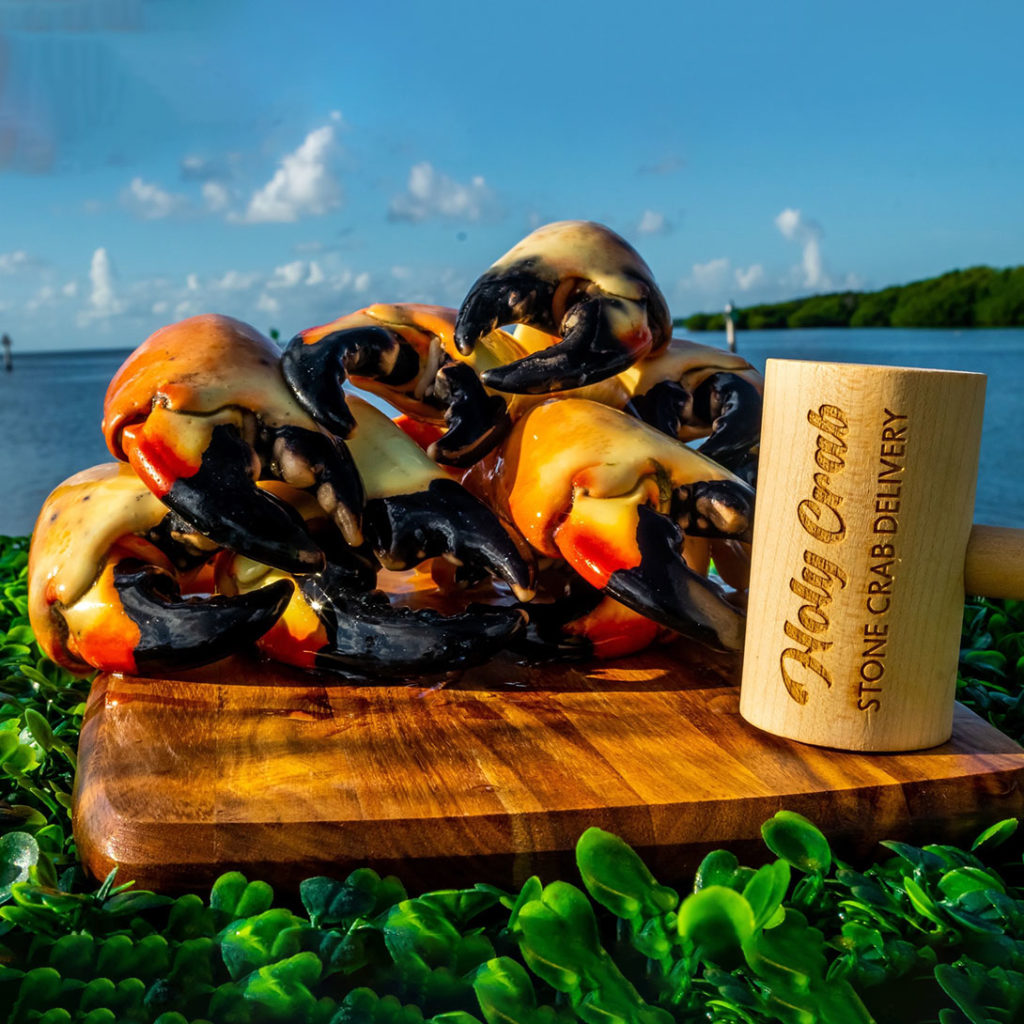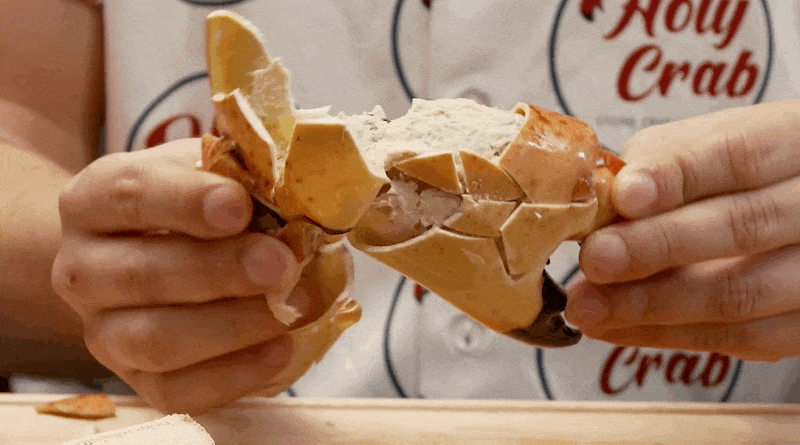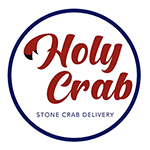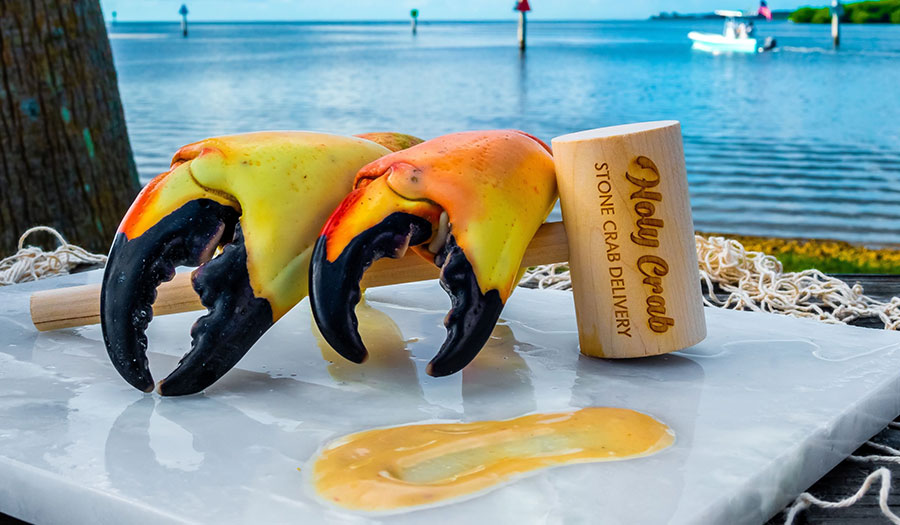Imagine the thrill of venturing out onto the waters of the Florida Keys, basking in the warm sunshine while searching for the delectable treasure that is the stone crab. In this article, you will discover the secrets to successfully catching these succulent creatures, as well as expert tips on how to cook and clean them to perfection.
Get ready to embark on a culinary adventure like no other, where you can experience the taste of the sea in the comfort of your own home. It’s time to embrace the ultimate seafood experience with our comprehensive guide on how to catch stone crab.
Preparing for Stone Crab Season
Stone crab season is an exciting time for seafood enthusiasts and fishermen alike. Whether you’re a seasoned pro or new to the world of stone crabbing, preparation is key to a successful and enjoyable experience.
In this comprehensive guide, we will explore every aspect of stone crabbing, from understanding the season to catching, cooking, cleaning, and even storing and shipping these delectable crustaceans. So, grab your bib and get ready to dive into the world of stone crab!
Understanding Stone Crab Season
Stone crab season is highly regulated to protect the sustainability of the species. The season typically runs from October 15th to May 15th, although specific dates may vary depending on the region and local regulations.
Understanding the season is crucial for planning your crabbing adventures and ensuring compliance with the law. During the season, stone crabs molt their claws, making them a prime target for harvest. However, it is important to remember that only the claws can be taken, and the crabs must be returned to the water to regenerate their claws.
Obtaining the Necessary Licenses and Permits
Before you hit the waters in search of stone crabs, it is essential to acquire the required licenses and permits. These licenses ensure that you are legally allowed to harvest and possess stone crabs within the designated season and limits.
Regulations may vary depending on your location, so it is crucial to research and comply with the specific requirements of your area. Contact your local wildlife or fisheries agency to obtain the necessary licenses and permits, and remember to keep them with you at all times while crabbing.

Gathering the Proper Equipment
Now that you have your licenses and permits in hand, it’s time to gather the proper equipment for a successful stone crabbing excursion. The following are some essential items you’ll need:
- Crab traps: Choose traps specifically designed for stone crabs, with openings that allow crabs to enter but not escape. These traps are usually constructed with wire mesh and have a bait box inside to attract the crabs.
- Floats and buoys: Attach buoys to your traps to mark their locations and ensure easy retrieval.
- Bait bags: These mesh bags are used to hold the bait securely inside the trap.
- Boat or watercraft: Stone crabs are typically found in shallow coastal waters, so a boat or watercraft will be necessary to access their habitats.
- Gloves and handling tools: Stone crabs can be quite feisty, and their claws are powerful enough to cause injury. Wearing gloves and using proper handling tools will protect you from unwanted pinches.
- Coolers: Having coolers on hand is essential for storing your catch and keeping it fresh until you’re ready to cook or ship it.
By ensuring you have all the necessary equipment beforehand, you’ll be well-prepared to venture out into the waters and start your stone crabbing journey.
Finding Stone Crab Habitats
Researching potential locations and identifying the ideal habitat conditions are critical steps in maximizing your chances of a successful stone crab catch. Here’s what you need to know:
Researching Potential Locations
Stone crabs are predominantly found in the coastal waters of the southeastern United States, particularly in Florida and the Gulf of Mexico. Before you begin crabbing, research local fishing reports, consult with seasoned crabbers, and consider joining online forums or communities dedicated to stone crabbing. These resources can provide valuable insights into the best locations for finding stone crab habitats and increase your chances of a fruitful outing.
Identifying the Ideal Habitat Conditions
Stone crabs prefer habitats with shallow waters, sandy or muddy bottoms, and abundant hiding places such as rocks, oyster beds, or seagrass. Look for areas with these characteristics to increase your chances of finding a thriving crab population.
Checking tide charts can also be beneficial since stone crabs are more active during certain tidal cycles. Additionally, keep an eye out for signs of crab presence, such as crab burrows or discarded shells, as these indicate a potential habitat.
Preparing for the Catching Process
Once you have identified a suitable location, it’s time to prepare for the catching process. Ensure your traps are clean, secure, and have the necessary bait inside. Stone crabs are attracted to fresh bait, such as fish carcasses or chicken parts.
Place the bait inside the bait box of the trap and securely close it. It’s essential to use baits that are legal and approved for use in your area. Once the traps are ready, place them strategically in the water, ensuring they are anchored or tied to prevent them from drifting away. Now, it’s time to exercise patience and wait for the stone crabs to take the bait.

Catching Stone Crab
How to Catch Stone Crab
Catching stone crabs requires skill, patience, and a bit of luck. Follow these steps to increase your chances of a successful catch:
Choosing the Right Bait
Selecting the right bait is crucial for attracting stone crabs to your traps. They are primarily scavengers, so bait with a strong odor is most effective. Some popular bait options include fish carcasses, chicken parts, or even cat food. Experiment with different bait types to see what works best in your area. Freshness is also key, so replace the bait regularly to maximize its effectiveness.
Setting Traps
When setting traps, it’s important to consider both depth and location. Stone crabs are typically found in shallow waters, so set your traps accordingly. Attach floats or buoys to each trap to mark their positions and ensure easy retrieval.
In terms of location, placing traps near rocky areas, oyster beds, or seagrass patches can increase your chances of success. However, be mindful of any regulations or restrictions on trap placement in your area. Distribute your traps in different spots to maximize your chances of a good catch.
Proper Placement and Timing
The timing of your trap deployment plays a significant role in stone crabbing success. Experts recommend baiting and placing traps in the late afternoon or early evening to take advantage of the crabs’ feeding habits during nighttime. Ensure that your traps are securely placed on the ocean floor with minimal movement from tides or currents. Properly anchoring or weighting your traps will help to keep them in place.
Monitoring and Maintaining the Traps
Once your traps are set, it’s important to periodically check on them to monitor the catch and prevent crabs from escaping. Regulations may stipulate the maximum amount of time traps can remain in the water, so be sure to comply with these guidelines. During your check-ins, inspect the traps for any damage and replace worn or broken parts as needed. Additionally, keep an eye out for any non-target species trapped in your pots and release them unharmed.
Retrieving the Traps and Handling the Crabs
Retrieving your traps and handling the captured stone crabs require care and attention. Use gloves and appropriate handling tools to prevent injury from the crabs’ powerful claws. When removing the crabs from the traps, grasp them firmly from the rear of the carapace to avoid getting pinched. You can use a measuring device to ensure the crabs meet the minimum legal size requirement, which may vary depending on your location. Remember, only harvest the claws, and promptly return the crabs to the water to allow them to regrow their missing limbs and continue their lifecycle.
Cooking Stone Crab
Now that you’ve successfully caught your stone crabs, it’s time to transition from sea to table. Cooking stone crabs is a simple process that allows the sweet and succulent flavor of the meat to shine. Here’s how to prepare and cook your stone crabs:
Preparing the Crabs for Cooking
The first step in cooking stone crabs is to prepare them for the cooking process. Rinse the crabs under cold water to remove any dirt or debris, and use a stiff brush to clean their shells. It’s essential to handle the crabs carefully during this process, as their claws can still deliver a painful pinch. Once the crabs are cleaned, it’s time to move on to the cooking methods.
Boiling Stone Crab Claws
Boiling is perhaps the most popular method for cooking stone crab claws. Fill a large pot with enough water to fully submerge the claws and add seasoning to taste. Popular seasonings include Old Bay seasoning, garlic, and lemon. Bring the water to a boil and carefully add the claws. Boil the claws for around six to eight minutes, depending on their size. Once cooked, remove the claws from the pot and immerse them in an ice bath to stop the cooking process and cool them down. Serve the claws chilled or reheat them before serving, and pair them with your favorite dipping sauce for an extra burst of flavor.
Steaming Stone Crab Claws
Steaming is another fantastic method for cooking stone crab claws, as it helps retain their natural flavors and textures. To steam the claws, fill a large pot with a shallow layer of water. Insert a steaming rack or a colander to elevate the claws above the water. Season the claws to taste and place them on the steaming rack. Cover the pot with a lid and steam the claws for approximately six to eight minutes, adjusting the cooking time based on their size. After steaming, transfer the claws to an ice bath to stop the cooking process. Serve them chilled or reheat them, and don’t forget to provide a selection of delectable dipping sauces to complement the delicate meat.
Serving Suggestions and Dipping Sauces
Stone crab claws are a delicacy on their own, but you can elevate the dining experience by complementing them with various side dishes and dipping sauces. Serve the claws on a bed of crushed ice for an appealing presentation, and garnish with lemon wedges for a citrusy zing. As for dipping sauces, the classics like clarified butter and tangy mustard sauce are always crowd-pleasers. But don’t hesitate to get creative and experiment with unique homemade sauces that highlight different flavor profiles. Some popular options include spicy mayo, jalapeno-lime aioli, or even a tangy cocktail sauce. The goal is to enhance the natural sweetness of the crab meat while tantalizing your taste buds with complementary flavors.
Cleaning Stone Crab
Cleaning stone crab claws is a necessary step to extract the precious meat hidden inside their sturdy shells. Follow these steps to clean your stone crabs efficiently:
Removing the Shell
Start by removing the shell from the stone crab claws. Hold the crab claw in one hand, grasp the claw with the other hand, and twist it gently until the shell separates from the meat. Be careful not to apply too much pressure to avoid crushing the delicate meat underneath.
Cleaning the Claws
Once the shell is removed, you’ll notice small feathery gills attached to the claw. These gills are not edible and should be removed. Use your fingers or a pair of kitchen tweezers to pull off the gills and discard them. Rinse the claws under cold water to remove any remaining shell fragments or debris.
Extracting the Meat
To extract the meat from the claws, use a crab cracker or a mallet to crack the shells carefully. Apply gentle pressure to crack the shell without damaging the meat inside. Once cracked, carefully remove the meat, trying to keep it intact as much as possible. Stone crab meat is delicate, so use caution during this process to preserve the beautiful chunks of meat.
Tips for Efficient Cleaning
Cleaning stone crab claws can be time-consuming, especially if you are dealing with a large catch. To streamline the process, it’s helpful to gather all the necessary tools beforehand, such as crab crackers, kitchen tweezers, and a safe surface for cracking the claws. Additionally, working near a sink or with a large bowl of water can make it easier to rinse off any shell fragments or debris. With practice and experience, you’ll develop your own efficient techniques for cleaning stone crab claws quickly and effectively.
Ensuring Sustainability
Stone crabbing is not just about catching and enjoying these delectable crustaceans—it is also crucial to prioritize sustainability and protect the longevity of the species. Here’s how you can contribute to the sustainability of stone crabs:
Understanding Conservation Regulations
Conservation regulations are put in place to manage and protect stone crab populations. It is essential to educate yourself about the specific regulations in your area, including size limits, bag limits, and closed seasons. Adhering to these regulations helps prevent overfishing and ensures that future generations can continue to enjoy the bounty of stone crabs.
Following Size and Bag Limits
Size limits exist to ensure that stone crabs have the opportunity to reproduce and regenerate their claws. Always check the minimum size requirement of the claws you are allowed to harvest, and measure them accurately before taking them from your catch. In addition to size limits, bag limits specify the maximum number of stone crabs you are permitted to possess or harvest. Abiding by these limits helps maintain the delicate balance of the ecosystem and promotes sustainable fishing practices.
Releasing Undersized or Egg-Bearing Crabs
It is crucial to release undersized or egg-bearing stone crabs back into the water to protect their population. Undersized crabs have not yet had the opportunity to reproduce, and their release allows them to continue their lifecycle. Egg-bearing females play a vital role in replenishing the population, so identifying and releasing them unharmed ensures the future abundance of stone crabs. It’s important to handle all crabs, regardless of their size or gender, with care and respect to minimize stress and prevent unnecessary harm.
Storing and Shipping Stone Crab
If you find yourself with more stone crabs than you can consume in one sitting, proper storage and shipping techniques are essential to maintain their freshness and deliciousness. Here’s what you need to know:
Proper Storage Techniques
To extend the shelf life of stone crabs, it’s crucial to store them properly. Place the live crabs in a cooler or a well-ventilated container filled with ice. Avoid direct contact between the crabs and the ice, as they are sensitive to extreme cold temperatures. Alternatively, you can store the cooked claws in an airtight container in the refrigerator, where they will remain fresh for up to three days. Always pay attention to any specific storage recommendations provided by your supplier or seafood provider to ensure optimal freshness.
Packaging for Shipping
If you plan to ship stone crab claws, proper packaging is essential to preserve their quality and ensure they arrive at their destination in pristine condition. Wrap each claw individually in plastic wrap to prevent freezer burn and maintain their flavor. Then, place the wrapped claws in a sturdy freezer bag or an airtight container to protect them during transit. Make sure to pack with sufficient insulation materials, such as frozen gel packs or dry ice, to maintain a temperature below 40°F (4°C) throughout the shipping process.
Utilizing Modern Shipping Methods
In today’s fast-paced world, modern shipping advancements make it easier than ever to have stone crab claws delivered right to your doorstep. Companies like Holy Crab Delivery leverage these advancements to offer fresh, never frozen stone crabs shipped straight from the Florida Keys within 24 hours. With carefully designed packaging and expedited shipping methods, you can enjoy the finest stone crab claws regardless of your location.

Preparing Stone Crab Dishes
Once you’ve mastered the catching, cooking, and cleaning of stone crabs, it’s time to explore the culinary side of these delectable crustaceans. Here are some ideas for preparing mouthwatering stone crab dishes:
Popular Stone Crab Recipes
There are numerous popular stone crab recipes to suit every palate. Classic options include stone crab bisque, crab cakes, or a refreshing stone crab salad. These recipes often showcase the delicate and sweet flavors of the crab meat while incorporating complementary ingredients to enhance the overall experience. Get inspired by renowned chefs, cookbooks, or online cooking communities that share their favorite stone crab recipes, and let your culinary creativity run wild.
Creative Culinary Ideas
If you’re feeling adventurous in the kitchen, why not experiment with unique culinary ideas to highlight the flavors of stone crabs? Incorporate them into sushi rolls or create a delectable stone crab pizza. You can also use the cooked crab meat as a topping for pasta, mix it into creamy dips, or even create savory pastries like crab-filled empanadas. Think outside the box and let your imagination guide you to create one-of-a-kind dishes that celebrate the exquisite taste of stone crabs.
Tips for Enhancing Flavors
To maximize the flavors of stone crab dishes, consider enhancing them with various seasoning blends, herbs, and spices. Lemon juice, garlic, and Old Bay seasoning are popular choices that perfectly complement the sweet and succulent crab meat. Fresh herbs like cilantro, basil, or chives can add an aromatic touch, while a sprinkle of chili flakes can introduce a hint of heat. Remember to balance the flavors and let the natural sweetness of the stone crab shine through.
Health Benefits of Stone Crab
In addition to their delightful taste, stone crabs offer several health benefits. Here’s why incorporating them into your diet can be a smart and nutritious choice:
High Protein and Low Fat Content
Stone crab meat is an excellent source of lean protein, making it an ideal choice for those seeking a protein-rich diet without the added fat. Protein is essential for building and repairing tissues, promoting muscle growth, and supporting overall health and wellbeing.
Rich in Omega-3 Fatty Acids
Omega-3 fatty acids are crucial for maintaining heart health, reducing inflammation, and supporting brain function. Stone crabs are a rich source of these beneficial fats, making them a valuable addition to a balanced diet.
Source of Essential Vitamins and Minerals
Stone crabs provide an array of essential vitamins and minerals that contribute to overall health. They contain significant amounts of vitamin B12, which supports red blood cell production and neurological function. Additionally, they are a good source of zinc, copper, and selenium—a trio of minerals vital for various bodily functions, from immune system regulation to antioxidant activity.
Stone Crab Seasonal Considerations
When planning your stone crabbing adventures or indulging in this seafood delicacy, it’s crucial to keep some seasonal considerations in mind. Here’s what you should be aware of:
Planning Ahead for the Season
Stone crab season is relatively short, typically from October to May, so planning ahead is essential. Be aware of the specific opening and closing dates in your area, as well as any changes or restrictions that may occur from year to year. This information will ensure that you make the most of the season and don’t miss out on your chance to enjoy these delectable crustaceans.
Understanding Price Fluctuations
Due to the limited availability of stone crabs and the seasonality of their availability, prices can vary significantly throughout the year. Generally, stone crabs are more abundant and affordable at the beginning of the season, with prices gradually increasing as the season progresses. If you’re looking for a more affordable option, consider purchasing stone crabs during the earlier months of the season when they are most plentiful.
Finding the Best Deals and Discounts
To make the most of stone crab season, keep an eye out for the best deals and discounts available. Local seafood markets, restaurants, or online seafood retailers may offer seasonal promotions or package deals to entice customers. Additionally, signing up for newsletters or following social media accounts of reputable seafood vendors can help you stay informed about exclusive offers. By exploring different options and being a savvy shopper, you can enjoy the flavors of stone crabs without breaking the bank.
Stone crab season is a highly anticipated time of the year for seafood lovers. By understanding the season, obtaining the necessary licenses, and gathering the proper equipment, you can embark on a successful stone crabbing adventure. From choosing the right bait to setting traps and cooking the claws, this comprehensive guide has covered everything you need to know to catch, cook, and clean stone crabs. Remember to prioritize sustainability, store and ship stone crab claws properly, and explore a wide range of culinary possibilities. With its health benefits and seasonal considerations in mind, indulge in the unique and delightful flavors of stone crab. Bon appétit!
 One Moment Please...
One Moment Please...


